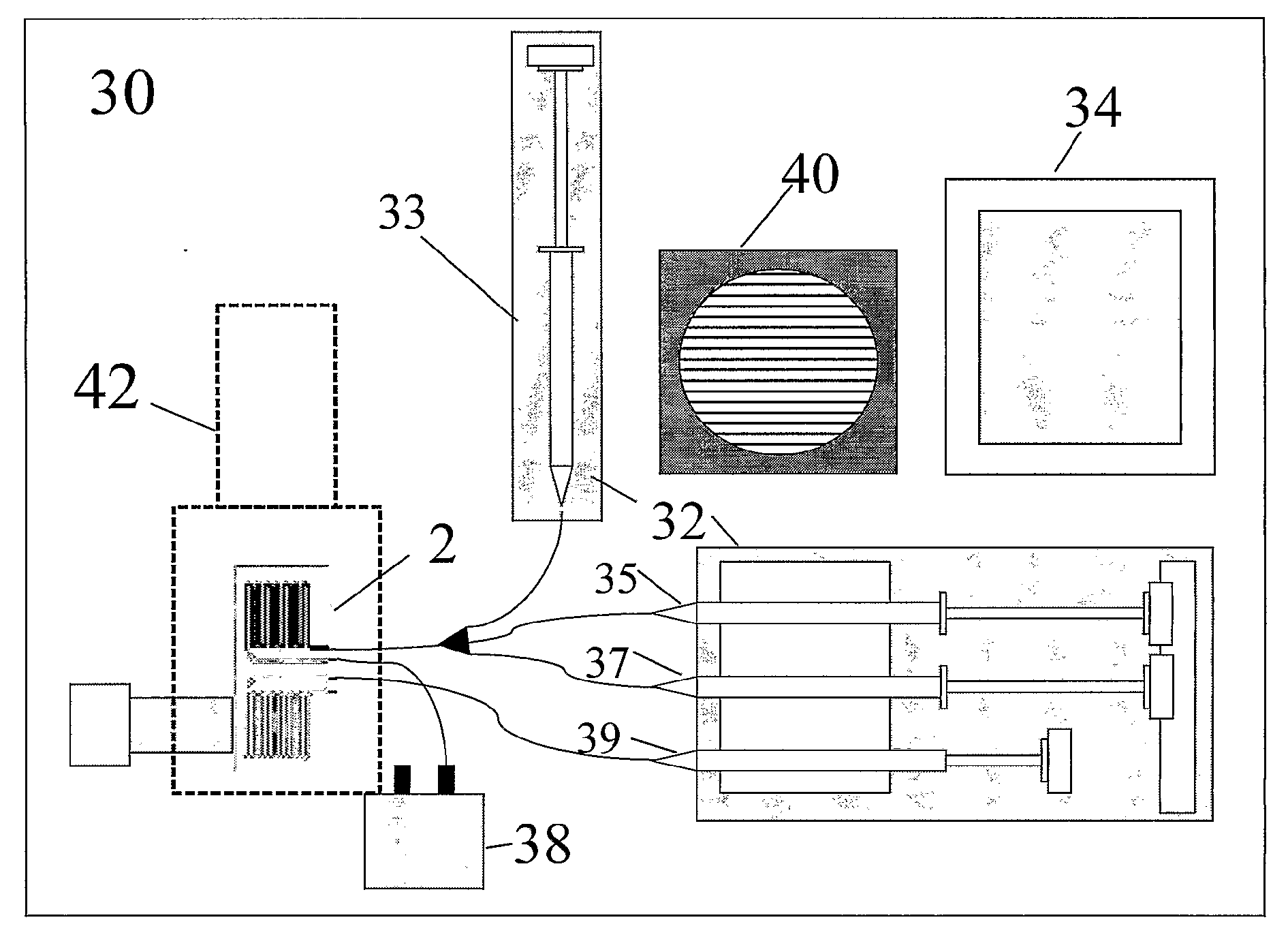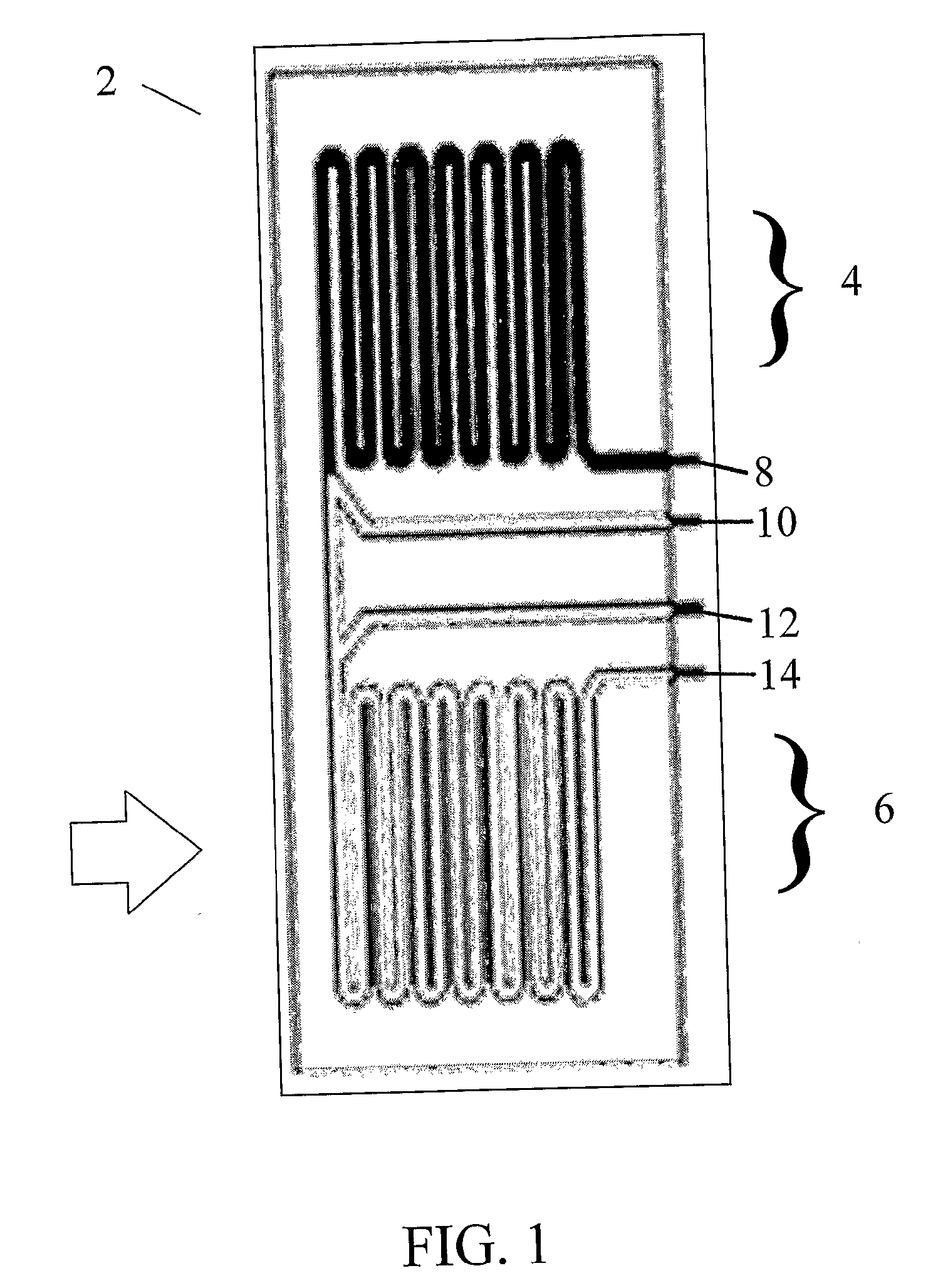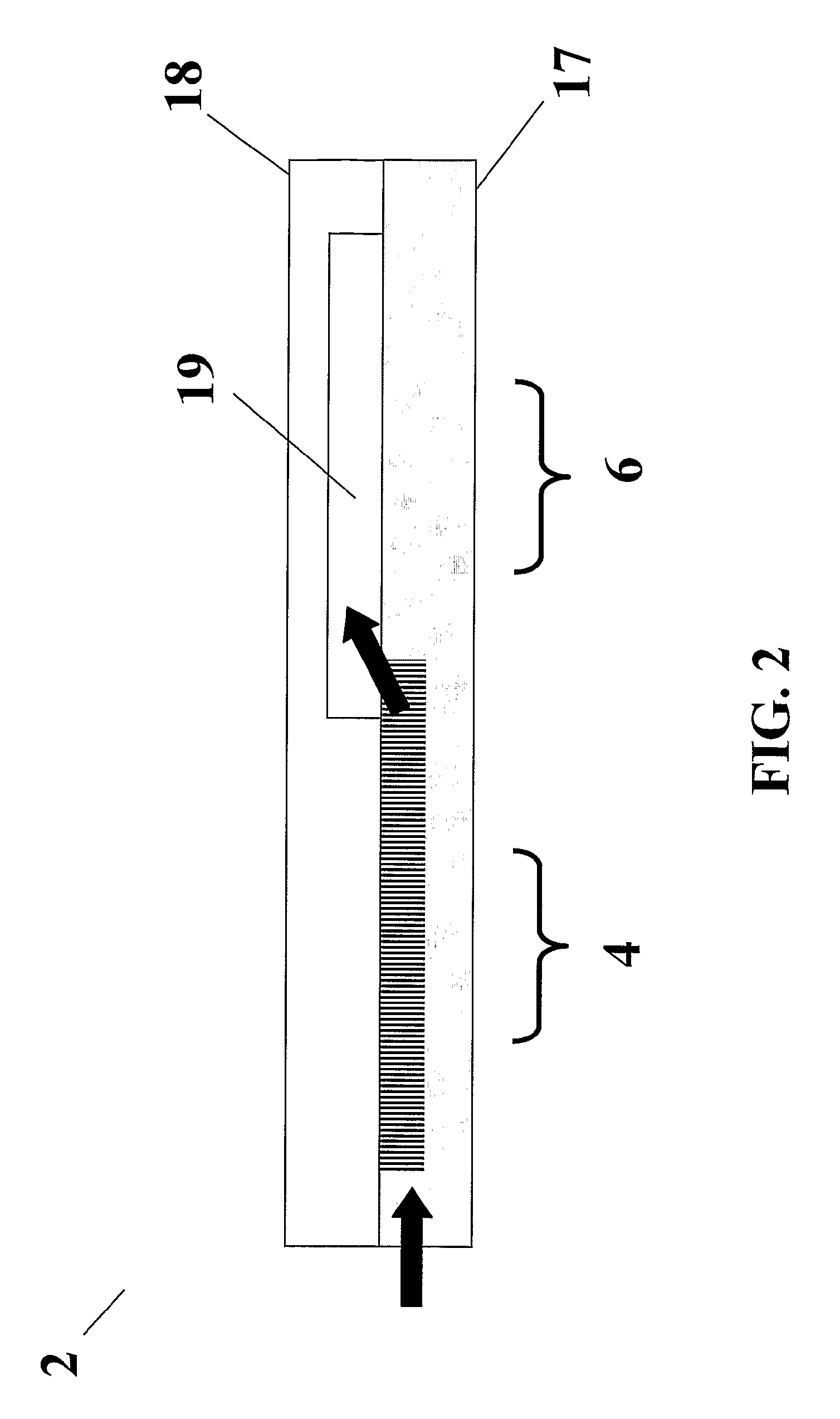Real-Time Pcr Detection of Microorganisms Using an Integrated Microfluidics Platform
a microfluidics and microorganism technology, applied in the field of microchips, can solve the problems of inability to extract and purify dna from intact cells, problems for real-time application, and additional problems for device fabrication, and achieve the effects of high degree of control over features, easy to use, and simple construction of present devices
- Summary
- Abstract
- Description
- Claims
- Application Information
AI Technical Summary
Benefits of technology
Problems solved by technology
Method used
Image
Examples
experiment 1
DNA Purification Only
[0038]In order to initially test the DNA purification of the microchip, a microchip was fabricated that only contained the DNA purification region and did not contain a PCR-based detection region. Briefly, 4 in. silicon wafers were spin coated with Shipley 1813 photoresist (Marlborough, Mass.) and patterned using a GCA 6300 5×g-line optical stepper (Costs Mesa, Calif.). The exposed photoresist was developed and the wafers were plasma etched in a Unaxis SLR 770 reactive ion etcher (St. Petersburg, Fla.) to either 20 or 50 μm deep. After etching, 100 nm of silicon dioxide (silica) was deposited on the wafers through plasma enhanced chemical vapor deposition (PECVD) using a GSI Ultradep system (San Jose, Calif.). Wafers were subsequently cleaned in acetone to remove excess photoresist. Corning 7740 (Corning, N.Y.) glass covers were prepared for this microdevice by drilling 0.75 mm holes with a diamond tipped drill. The covers were then cleaned, along with the silic...
experiment 2
Microchip DNA Purification and Real-Time PCR Detection
[0046]A microchip 2 in accordance with the present invention is provided for the detection of the pathogens Listeria monocytogenes and Bacillus anthracis. These organisms are Gram positive bacterium that have been responsible for several disease-causing outbreaks in the past decade. Although L. monocytogenes is rarely lethal to healthy adults, it is highly virulent in the elderly, newborns, immuno-compromised individuals and pregnant women. Because this organism is a current threat to food safety, it is an ideal organism to use for model studies of the portable detection system 30 described herein. B. anthracis is the causative agent of Anthrax and has been shown to cause acute respiratory and cutaneous disease in humans and livestock. Previous studies have demonstrated real-time PCR-based detection of these organisms, using stationary laboratory equipment with high accuracy and sensitivity, can provide detection limits as low as...
PUM
 Login to View More
Login to View More Abstract
Description
Claims
Application Information
 Login to View More
Login to View More - R&D
- Intellectual Property
- Life Sciences
- Materials
- Tech Scout
- Unparalleled Data Quality
- Higher Quality Content
- 60% Fewer Hallucinations
Browse by: Latest US Patents, China's latest patents, Technical Efficacy Thesaurus, Application Domain, Technology Topic, Popular Technical Reports.
© 2025 PatSnap. All rights reserved.Legal|Privacy policy|Modern Slavery Act Transparency Statement|Sitemap|About US| Contact US: help@patsnap.com



